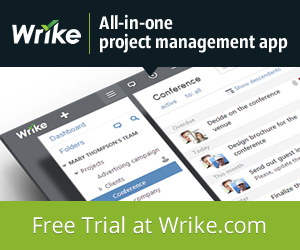
Image from XL Urban Media
If you’re in IT, you’ve probably been getting requests from employees to get their tablets connected to the network for a while now. These devices aren’t going away – but which ones should you encourage, support or deploy?
Apple iPad
Pros: Ubiquitous, easy to manage
Cons: Expensive
Despite the iPad’s touchy-feely, consumer-friendly image, it’s actually quite common in the corporate world. That’s partly because Apple has gone out of its way to make it, as they say, “Ready for work.” Through a Mobile Device Management server, deployed iPads can be updated, wiped, and otherwise managed from a central console. IT can even roll out custom apps that don’t go through the iTunes App Store. At a minimum of $499, the newest iPad isn’t the cheapest tablet option, but total cost of ownership can be low if handled right. There’s also the most choice of accessories out of any tablet available.
Android tablets
Pros: Lots of variety
Cons: Lots of variety
If only a few power users need tablets, Android is a good way to go, as long as they can be trusted to manage things like software updates and virus protection themselves. There’s an Android tablet for every price range, from sub-$100 no-name models that move like molasses and barely respond to your touch to premium Samsung, Motorola, Toshiba, and Acer tablets for around $400. Productivity software like Kingsoft Office or OliveOffice is easy to find, and mostly free. 7-inch screens are good for reading and app use, but a 10-inch is recommended if lots of typing or other input is needed.
Microsoft Windows tablets
Pros: Run standard office software, can replace laptops
Cons: Very expensive, don’t exist yet
If you’re looking to buy tomorrow, this option is right off the table. Microsoft’s own Surface tablet won’t be shipping until fall, and tablets from other OEMs are on roughly the same schedule. If you can wait, though, they look promising. Models around $500 will come loaded with Windows RT, which can only run mobile apps designed for Metro, the new tablet and phone interface, but they’ll also include a version of Microsoft Office. Beefier models will run full Windows 8, so any desktop software should run on them. They’ll cost about $1,000, and many will come with keyboard docks so they can be purchased instead of laptops for mobile users.
BlackBerry PlayBook
Pros: Cheap, easy to manage
Cons: Company may disappear
The one and only tablet from Research in Motion (RIM) is better, engineering wise, than its performance in the marketplace would have you believe. Android and iOS stole BlackBerry’s cachet when they came out, and excitement for the platform has never recovered. Some Android apps are making their way over, thanks to a porting process created by RIM, but the number of available apps still lags way behind. There’s even concern that RIM could be headed for bankruptcy or purchase by another company. But at $199 and with darn good management software in Mobile Fusion (which handles iPhones, iPads and Android devices as well), BlackBerry could still surprise us.
Choosing a tablet involves more than one decision. Look at the number of devices you need, how they’ll be used, and what your budget is to make the best choice for your office.
About the Author: John Andrews writes for Infragistics, a world leader in developing awesome user experiences through products like user interface tools for Sharepoint.













